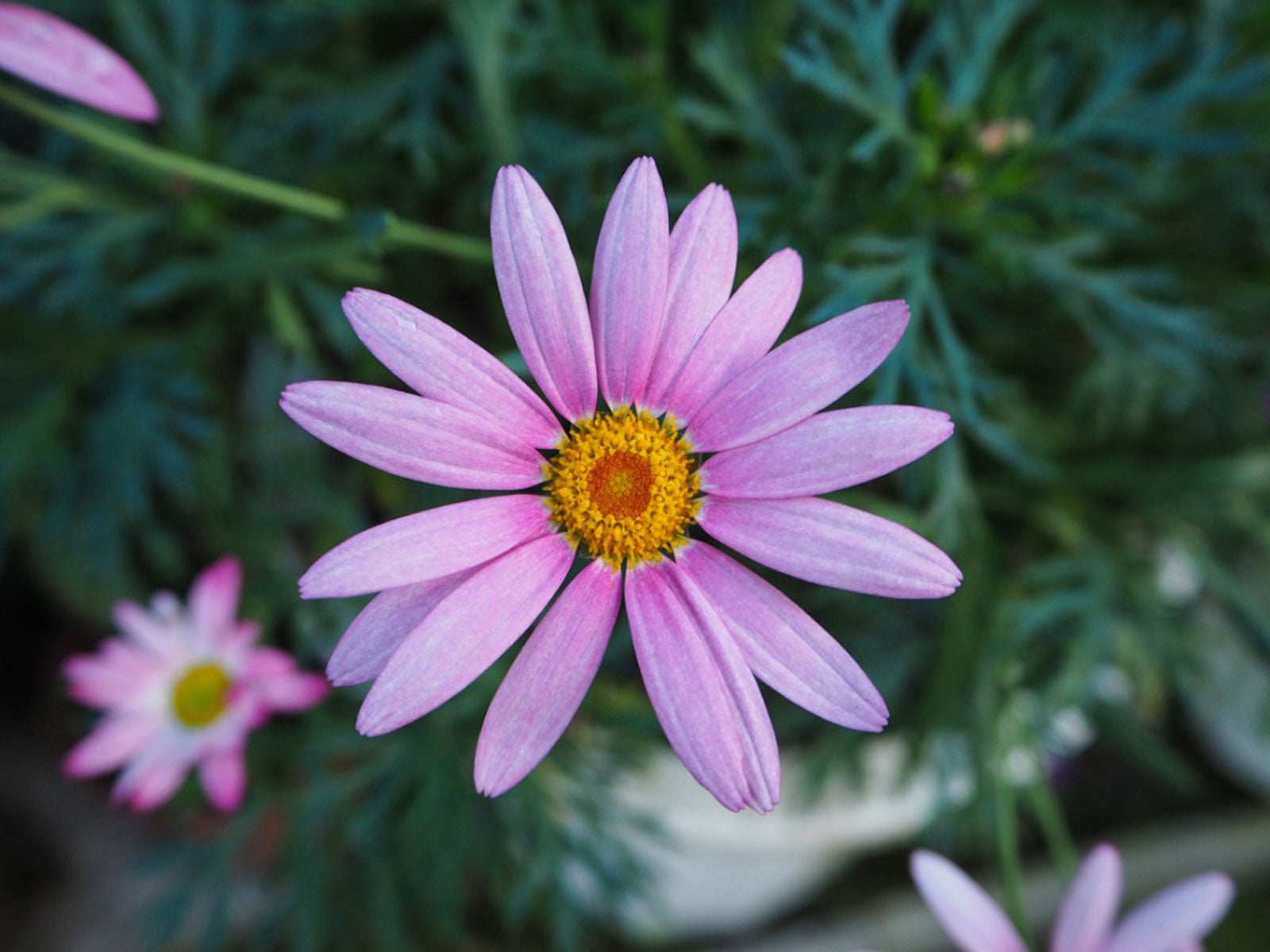Marguerite Daisy Flowers: How To Grow Marguerite Daisies

Marguerite daisy flowers are a small, shrub-like perennial in the family Asteraceae, which are native to the Canary Islands. This little herbaceous perennial is a nice addition to flower beds, borders, or as a container specimen. Marguerite daisy flowers, whose Latin name is Argyranthemum frutescens, are terrific butterfly and other pollinator attractors. Available in a variety of hues from white or yellow to pink or purple depending on the species, these daisies are similar in appearance to the Shasta daisy. The various species and subspecies result from hybridization, and thus, may be imports from several spots around the globe. Two examples of this are the blue marguerite daisy, which hails from South Africa, and the white harvest snow daisy, which was brought from Germany.
How to Grow Marguerite Daisies
For optimal blooms and healthy plants, marguerite daisy growing conditions tend towards favoring cooler temperatures. The blooms are fullest in the fall and spring months depending on your climate zone. Marguerite daisies are USDA zoned through 9 through 11, although I have heard from folks in zone 3 who say they do well in early spring. Regardless, it is certainly a fact that when the thermometer dips below freezing, it is time to say goodbye to the plant until the following spring. So, how to grow marguerite daisies? These little beauties grow 2 to 3 feet (61-91 cm.) tall and spread about 3 feet (91 cm.), so keep this in mind when choosing a garden spot. They also prefer full sun (although they will do just fine in partial sunlight) with nicely draining soil and regular irrigation. Don't overwater the daisies, however, as this will adversely affect the plant. They may be susceptible to root rot, mold, and mildew should the soil retain too much water. Now that you have planted your daisies, the only question that remains is, “How to care for marguerite daisy?”
How to Care for Marguerite Daisy
Care of marguerite daisies is pretty straightforward. The plants are not plagued by most pests, although the usual suspects such as aphids, mites, and thrips may occasionally assault them. If so, there are pesticides like neem oil that can squash the infestation before it does too much damage. Although it is listed as a perennial, the marguerite daisy may be planted as an annual in certain climates, and it really only thrives for two or three seasons. To increase the bushiness of this shrubby daisy and promote constant blooming, prune back or “deadhead” any dying flowers. For additional plants the following year, keep in mind that the specific cultivar does not grow true from seed, however, cuttings may be taken in late summer and overwintered until the spring.
Gardening tips, videos, info and more delivered right to your inbox!
Sign up for the Gardening Know How newsletter today and receive a free copy of our e-book "How to Grow Delicious Tomatoes".

Amy Grant has been gardening for 30 years and writing for 15. A professional chef and caterer, Amy's area of expertise is culinary gardening.
-
 4 Superfast Composting Methods: Turn Waste Into Garden Gold In 30 Days Or Less
4 Superfast Composting Methods: Turn Waste Into Garden Gold In 30 Days Or LessTry the fastest composting methods to turbocharge your pile and transform kitchen scraps and garden waste into finished compost in just a few weeks.
By Mary Ellen Ellis
-
 Best Spider Plant Soil – Complete Soil Guide And Expert Tips For Keeping Plants Happy
Best Spider Plant Soil – Complete Soil Guide And Expert Tips For Keeping Plants HappySpider plants are fun and easy plants to grow, but what is the best soil for a spider plant? Selecting the right soil is important so they can thrive.
By Bonnie L. Grant